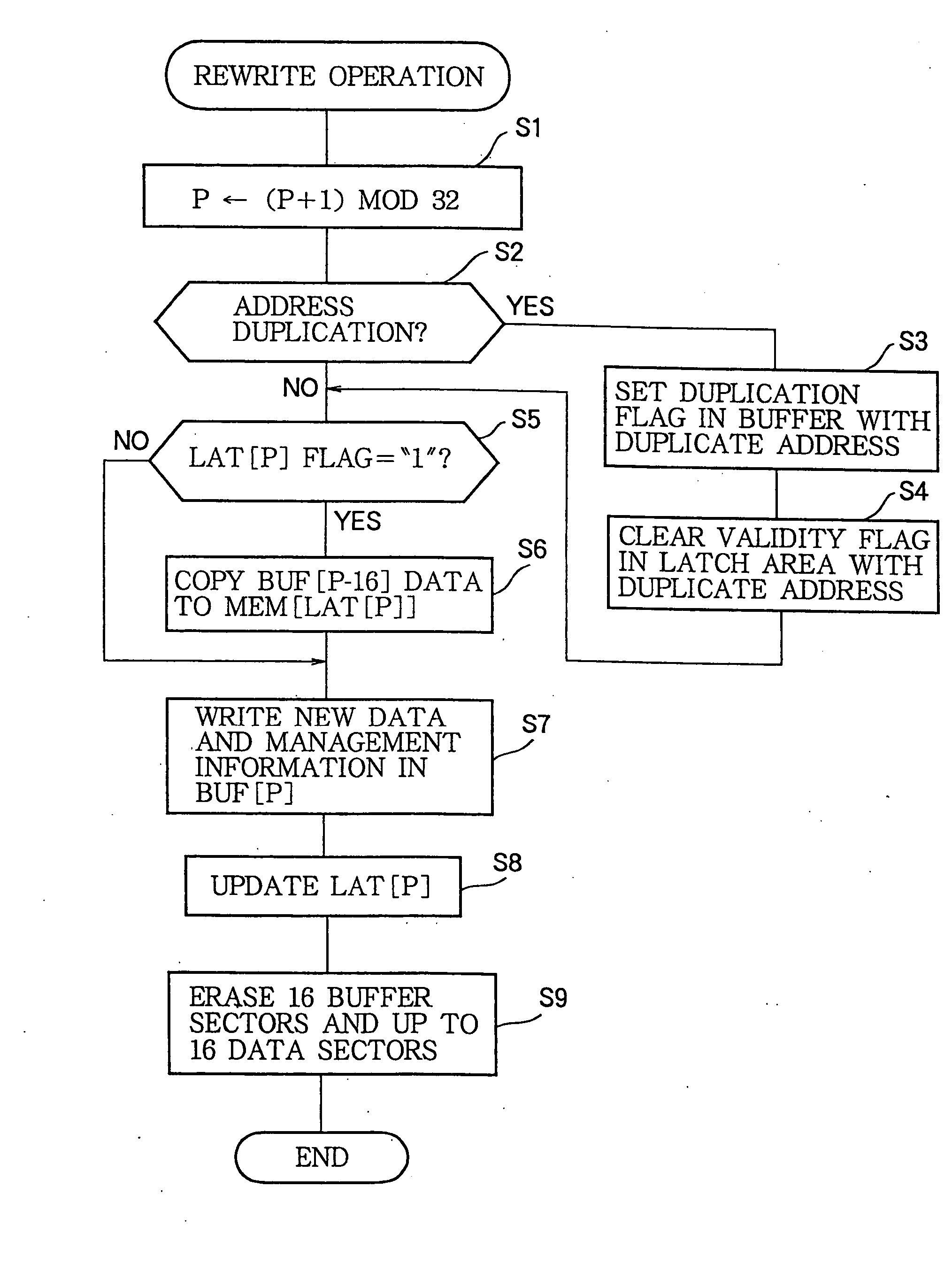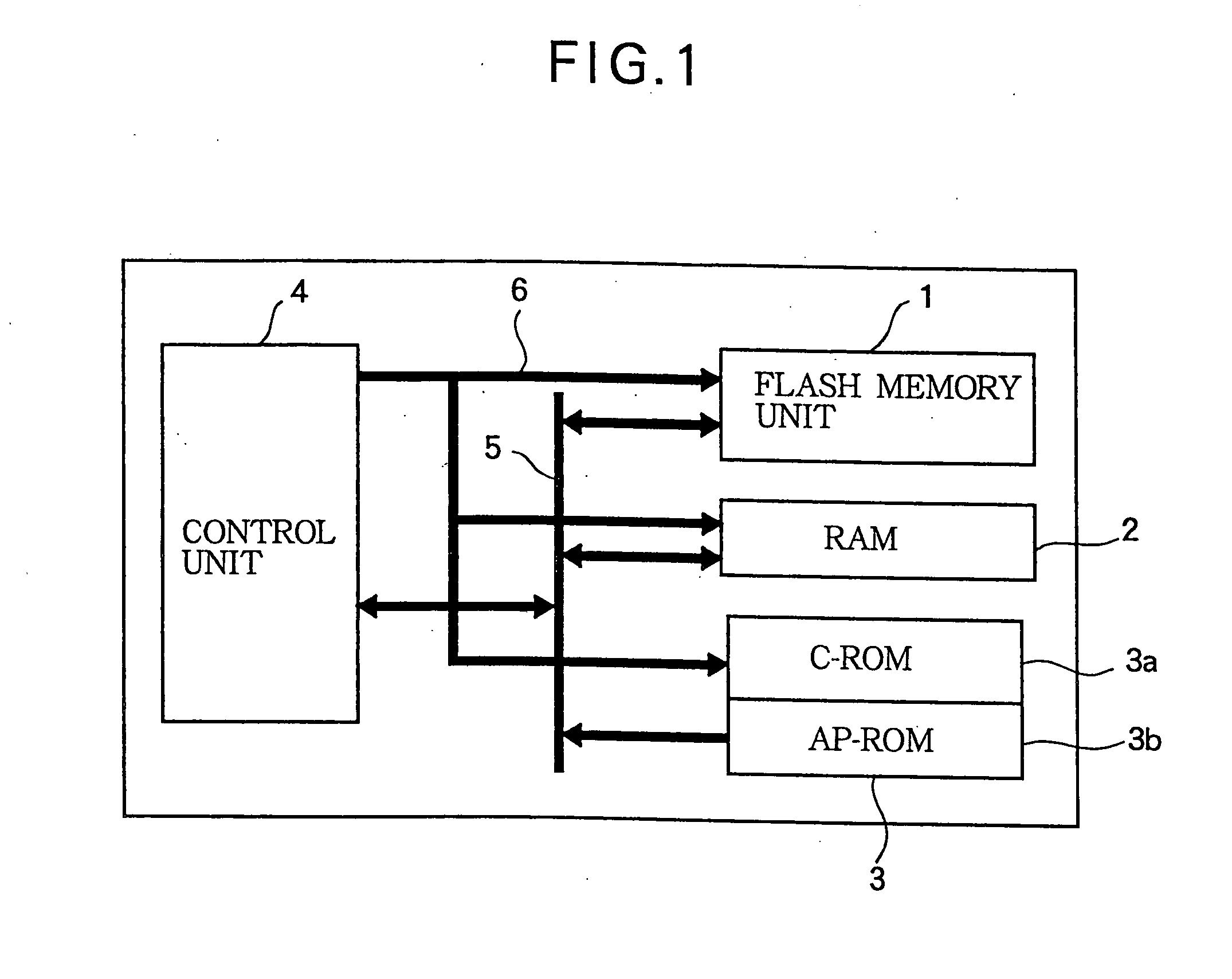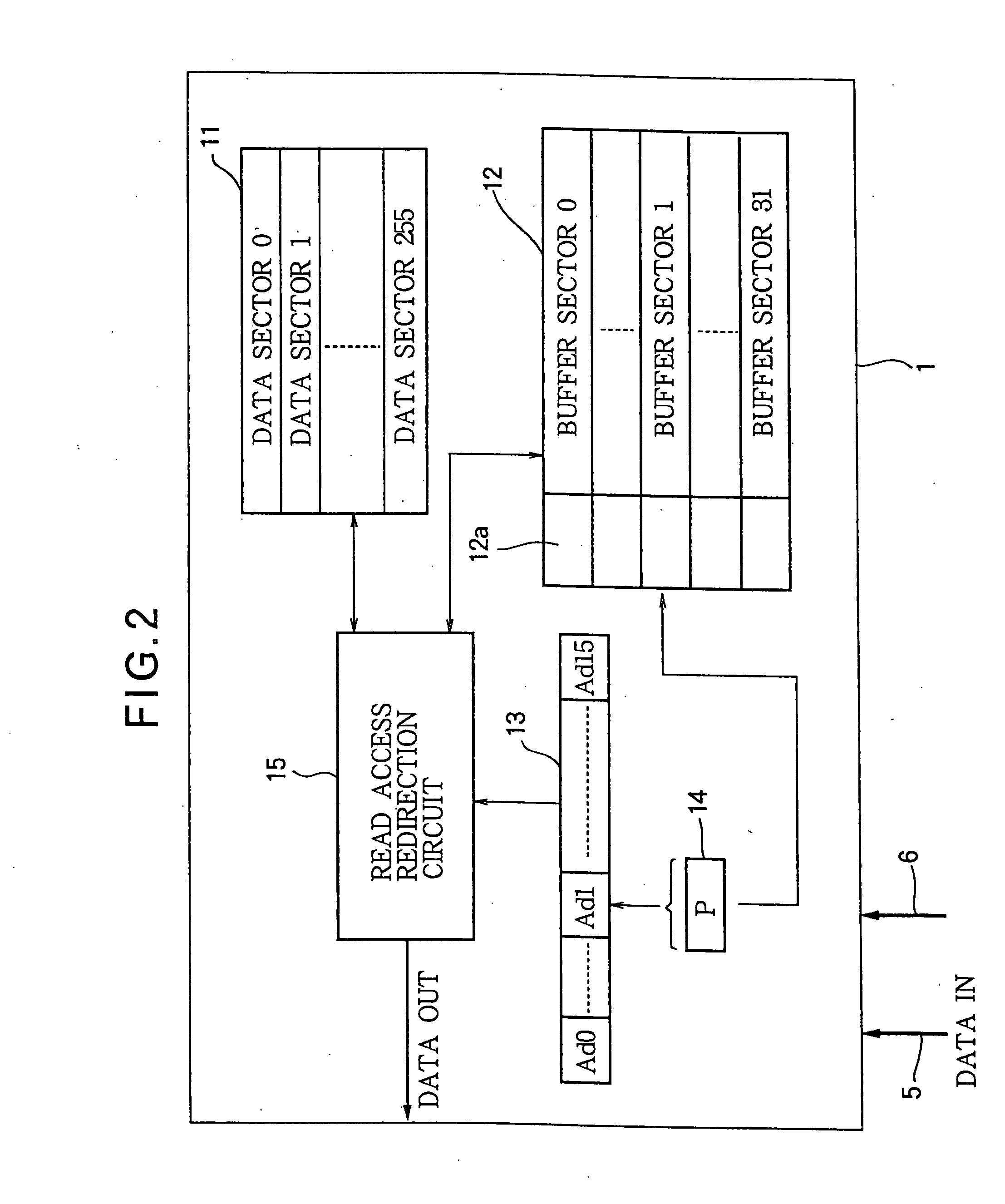Data rewriting method for flash memory using partial erases
a data rewriting and flash memory technology, applied in the direction of memory adressing/allocation/relocation, instruments, digital storage, etc., can solve the problems of wasting a lot of time, so as to achieve the effect of less tim
- Summary
- Abstract
- Description
- Claims
- Application Information
AI Technical Summary
Benefits of technology
Problems solved by technology
Method used
Image
Examples
first embodiment
[0028]FIG. 1 is a functional block diagram of a microcomputer illustrating a first embodiment of the invention, comprising a flash memory unit 1, a random-access memory (RAM) 2, a read-only memory (ROM) 3, a control unit 4, a sixteen-bit data bus 5, and a thirteen-bit address bus 6. The ROM 3 includes a control ROM (C-ROM) 3a and an application ROM (AP-ROM) 3b. One function of these component elements is to rewrite data in the flash memory unit 1. The flash memory unit 1 may be embedded in a smart card of the contact type or the contactless type. The flash memory unit 1 and the other component elements may be integrated on a single semiconductor chip, or the flash memory unit 1 may be on a separate chip.
[0029] The flash memory unit 1 stores user data and other data semipermanently. The RAM 2 temporarily stores variables and other work data, such as data awaiting storage in the flash memory unit 1. The ROM 3 stores programs and data that control the operation of the microcomputer: t...
second embodiment
[0115] The rewriting operation in the second embodiment is a variation of the rewriting operation in the first embodiment.
[0116] In the rewriting operation in the first embodiment, if a duplicate address is detected (step S2 in FIG. 10), the duplication flag in the management area 12a of the buffer sector having the duplicate address is set to “1” (step S3), flagging the rewrite address and the old data in that buffer sector as invalid, before the new data and rewrite address have been written in the current buffer sector. If power fails or is shut down during steps S4 to S7, it may therefore become impossible to recover either the new data or the old data. In the rewriting operation of the second embodiment, the duplication flag is not set to “1” until after the new data have been written in the current buffer sector, so that at all times, either the old data or the new data are flagged as valid in the flash buffer 12. Valid data can therefore be found in the initialization at the...
third embodiment
[0129] The microcomputer in the third embodiment of the present invention differs from the microcomputer in the first embodiment in the configuration and function of the flash memory unit 1 in FIG. 1.
[0130]FIG. 12 is a functional bock diagram of the flash memory unit 1 in the microcomputer in the third embodiment. The flash memory now includes a flash data memory 11 and an erase buffer 16. The flash memory unit 1 also includes an address latch 13, an address pointer 14, and an address RAM 17. The erase buffer 16 and address RAM 17 replace the flash buffer 12 and read access redirection circuit 15 of the first embodiment. The flash data memory 11, address latch 13, and address pointer 14 are equivalent to the corresponding elements in FIG. 2, but are modified with respect to structure and function.
[0131] The flash data memory 11 in the third embodiment has two hundred eighty-eight 34-byte data sectors. Each data sector comprises a 32-byte data area for storing data, and a 2-byte me...
PUM
 Login to View More
Login to View More Abstract
Description
Claims
Application Information
 Login to View More
Login to View More - R&D
- Intellectual Property
- Life Sciences
- Materials
- Tech Scout
- Unparalleled Data Quality
- Higher Quality Content
- 60% Fewer Hallucinations
Browse by: Latest US Patents, China's latest patents, Technical Efficacy Thesaurus, Application Domain, Technology Topic, Popular Technical Reports.
© 2025 PatSnap. All rights reserved.Legal|Privacy policy|Modern Slavery Act Transparency Statement|Sitemap|About US| Contact US: help@patsnap.com



